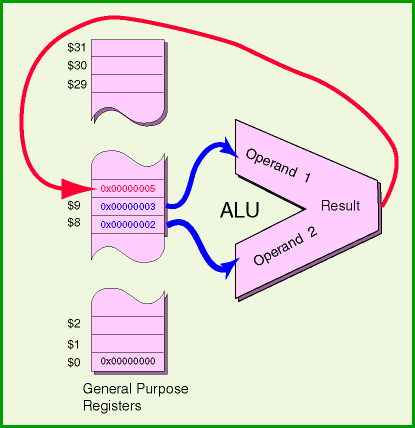Registers and the ALU

The arithmetic/logic unit (ALU) of a processor performs integer arithmetic and logical operations. For example, one of its operations is to add two 32-bit integers. An integer used as input to an operation is called an operand. One operand for the ALU is always contained in a register. The other operand may be in a register or may be part of the machine instruction itself. The result of the operation is put into a general purpose register.
Machine instructions that use the ALU specify four things:
- The operation to perform.
- The the first operand (often in a register).
- The second operand (often in a register).
- The register that receives the result.
The picture shows a 32-bit addition operation. The operands are register $8 and register $9. The result in put in register $10. Here is how that instruction is written as assembly language:
addu $10,$8,$9